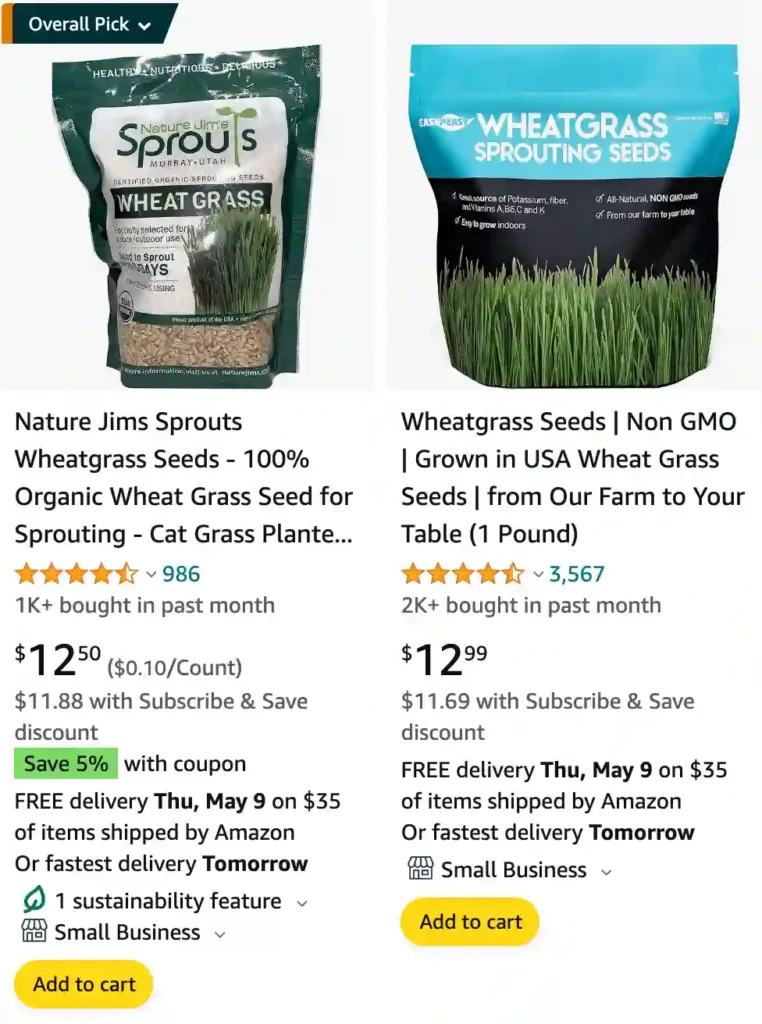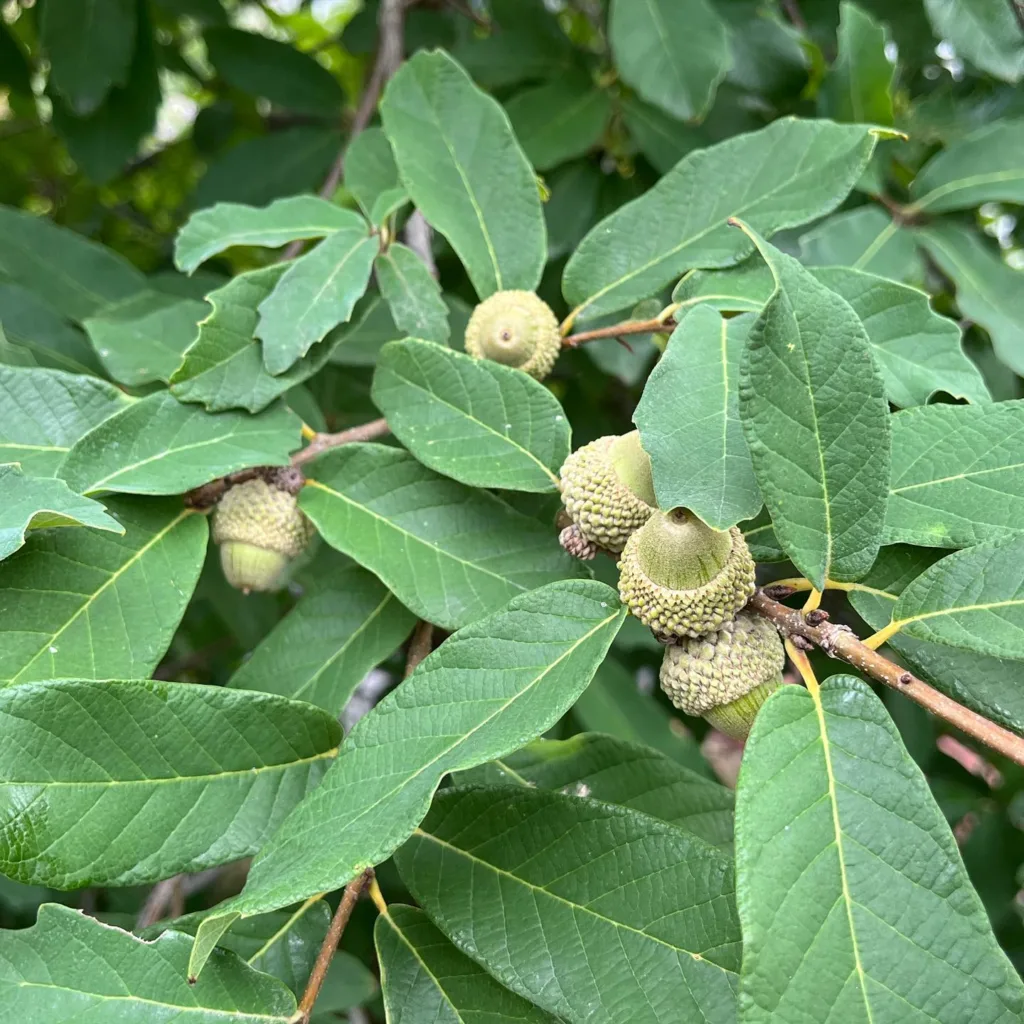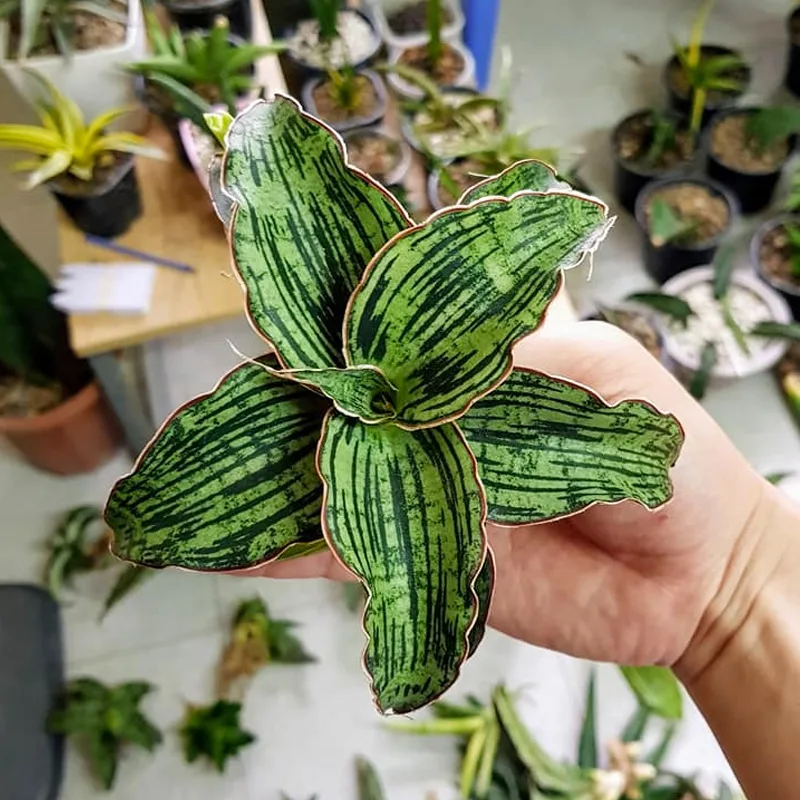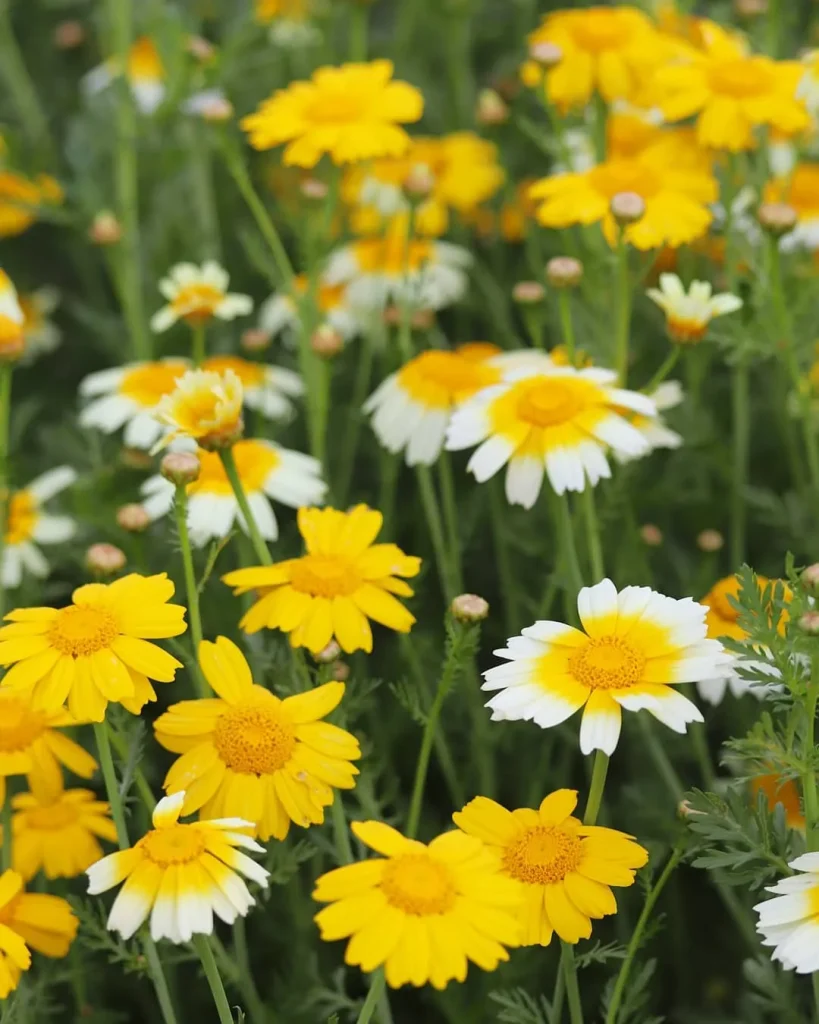
What does wheatgrass taste like?
Wheatgrass tastes like a potent blend of earthiness and bitterness. The first time I tried it, I was taken aback by its intense flavor. It’s reminiscent of freshly mown grass, but with a sharper, more pungent edge. Some describe it as slightly sweet, but to me, the dominant notes are definitely on the bitter side. It’s not something I’d say I enjoy solely for its taste, but rather for its reputed health benefits.
Where to buy wheatgrass?
You can find wheatgrass at various health food stores, organic markets, or specialty shops that focus on natural remedies and supplements. Personally, I’ve found it most convenient to buy wheatgrass at local farmers’ markets or from vendors who specialize in organic produce. Sometimes, I even see it available at larger supermarkets with a well-stocked health foods section. Additionally, if you’re interested in growing your own, you can purchase wheatgrass seeds online or at gardening stores and cultivate it at home. There’s a certain satisfaction in nurturing something from seed to harvest, plus it ensures you have a fresh supply whenever you need it.
Can dogs eat wheatgrass?
Yes, dogs can eat wheatgrass, and many actually enjoy it. I’ve observed this firsthand with my own furry friend. Wheatgrass can be a nutritious addition to a dog’s diet, providing vitamins, minerals, and fiber. Plus, it can aid in digestion and help with the elimination of hairballs for dogs that groom themselves frequently. However, it’s essential to ensure that the wheatgrass is free from any pesticides or chemicals that could harm your pet. Also, moderation is key; too much wheatgrass consumption can potentially lead to gastrointestinal upset in dogs, so it’s best to offer it as an occasional treat rather than a daily indulgence.
Can guinea pigs eat wheatgrass?
Yes, guinea pigs can eat wheatgrass, and it’s actually a fantastic addition to their diet. My own guinea pigs love nibbling on fresh wheatgrass. It provides them with essential nutrients like fiber, vitamins, and minerals, helping to keep them healthy and happy. Plus, it’s a great way to stimulate their natural foraging instincts and keep them entertained. When offering wheatgrass to guinea pigs, it’s important to ensure that it’s clean and free from any pesticides or chemicals that could harm them. Fresh wheatgrass from a trusted source or grown at home without the use of harmful substances is the best option. Additionally, like with any new food, it’s wise to introduce wheatgrass gradually into their diet to avoid any digestive upset.
Can bearded dragons eat wheatgrass?
Yes, bearded dragons can eat wheatgrass, and it can be a nutritious addition to their diet. I’ve seen this firsthand with my own bearded dragon, who enjoys munching on small amounts of wheatgrass occasionally. Wheatgrass provides essential nutrients like fiber, vitamins, and minerals that can contribute to their overall health. However, it’s crucial to ensure that the wheatgrass is clean and free from any pesticides or chemicals that could be harmful to your pet. Additionally, wheatgrass should be offered as part of a balanced diet that includes a variety of vegetables, fruits, and protein sources suitable for bearded dragons. As with any new food, it’s essential to introduce wheatgrass gradually and monitor your pet for any signs of digestive upset.
Can bunnies eat wheatgrass?
Yes, bunnies can eat wheatgrass, and it’s actually a wonderful addition to their diet. I’ve seen this firsthand with my own bunnies, who absolutely love nibbling on fresh wheatgrass. It’s packed with essential nutrients like fiber, vitamins, and minerals, which are crucial for their health and digestion. Plus, chewing on wheatgrass helps wear down their constantly growing teeth, preventing dental issues. When offering wheatgrass to bunnies, it’s important to ensure that it’s clean and free from any pesticides or chemicals that could harm them. Fresh wheatgrass from a trusted source or grown at home without the use of harmful substances is the best option. Additionally, like with any new food, it’s wise to introduce wheatgrass gradually into their diet to avoid any digestive upset. Overall, wheatgrass can be a tasty and nutritious treat for bunnies to enjoy.
Can chickens eat wheatgrass?
Yes, chickens can eat wheatgrass, and it can be a beneficial addition to their diet. I’ve personally observed this with my own chickens, who enjoy pecking at fresh wheatgrass. It provides them with essential nutrients like fiber, vitamins, and minerals, which are important for their overall health and egg production. Additionally, wheatgrass can help with digestion and serve as a natural source of entertainment for chickens as they forage and explore their environment. When offering wheatgrass to chickens, it’s important to ensure that it’s clean and free from any pesticides or chemicals that could harm them. Fresh wheatgrass from a trusted source or grown at home without the use of harmful substances is the best option. Overall, wheatgrass can be a nutritious and enjoyable addition to a chicken’s diet.
How do i juice wheatgrass?
Juicing wheatgrass is relatively straightforward, but it does require a specific type of juicer called a wheatgrass juicer or a masticating juicer. Here’s how I juice wheatgrass:
First, I start by rinsing the wheatgrass thoroughly under cold water to remove any dirt or debris. Next, I cut the wheatgrass into smaller pieces to make it easier for the juicer to process. Then, I set up my wheatgrass juicer according to the manufacturer’s instructions and turn it on. I slowly feed the cut wheatgrass into the juicer, making sure not to overload it. As the juicer processes the wheatgrass, it extracts the juice while leaving behind the fibrous pulp. I collect the fresh wheatgrass juice in a clean container, being mindful to keep it refrigerated if I’m not drinking it immediately to preserve its freshness and nutrients. Once I’ve juiced all the wheatgrass, I clean the juicer thoroughly to maintain its performance and hygiene for future use. Overall, juicing wheatgrass can be a simple and rewarding process, yielding a vibrant green juice packed with nutrients and health benefits.
How tall does wheatgrass grow?
Wheatgrass typically grows to a height of around 7 to 14 inches, although it can vary depending on factors like growing conditions and the specific variety of wheatgrass. When I’ve grown wheatgrass at home, I’ve noticed that it usually reaches its full height within 7 to 10 days after sprouting. During this time, it undergoes rapid growth, with the blades becoming increasingly lush and vibrant green. Harvesting the wheatgrass at its peak height ensures that it contains the highest concentration of nutrients, making it ideal for juicing or adding to smoothies. Overall, the height of wheatgrass provides a visual cue for when it’s ready to be harvested and enjoyed.
Is wheatgrass high in oxalates?
Yes, wheatgrass is considered to be moderately high in oxalates. Oxalates are naturally occurring compounds found in many plants, including wheatgrass, and they can contribute to the formation of kidney stones in some individuals when consumed in large amounts. While wheatgrass can be a nutritious addition to the diet, especially in moderation, those with a history of kidney stones or other related conditions may want to limit their intake or consult with a healthcare professional before consuming large quantities of wheatgrass or other foods high in oxalates. As with any dietary concern, it’s essential to consider individual health needs and make informed choices based on personal circumstances.
How to freeze wheatgrass?
Freezing wheatgrass can help preserve its freshness and nutrients for longer-term storage. Here’s how I freeze wheatgrass:
- Harvest the wheatgrass at its peak height, ensuring that it’s clean and free from any dirt or debris. Rinse it thoroughly under cold water to remove any remaining residue.
- Pat the wheatgrass dry with paper towels or a clean kitchen cloth to remove excess moisture. This helps prevent freezer burn and maintains the quality of the wheatgrass during freezing.
- Spread out the wheatgrass in a single layer on a baking sheet lined with parchment paper or wax paper. Make sure the wheatgrass isn’t overcrowded, as this allows for better airflow and prevents clumping during freezing.
- Place the baking sheet in the freezer and allow the wheatgrass to freeze completely, which typically takes a few hours.
- Once the wheatgrass is frozen solid, transfer it into airtight freezer bags or containers. Label the bags or containers with the date of freezing for reference.
- Return the frozen wheatgrass to the freezer and store it for up to several months.
When you’re ready to use the frozen wheatgrass, simply remove the desired amount from the freezer and thaw it in the refrigerator or at room temperature. Avoid thawing wheatgrass in the microwave or using hot water, as this can cause it to lose some of its nutritional value. Enjoy the thawed wheatgrass in juices, smoothies, or other recipes as desired.
How to get rid of wheatgrass?
Getting rid of wheatgrass can be done in several ways depending on your situation:
- Composting: If you’ve grown wheatgrass at home and want to dispose of it, composting is an eco-friendly option. Simply add the wheatgrass to your compost pile or bin along with other organic materials. Over time, it will break down and decompose, enriching your compost with nutrients.
- Feeding Livestock: If you have livestock such as chickens, rabbits, or guinea pigs, you can feed them the wheatgrass. Many animals enjoy nibbling on fresh wheatgrass, and it can be a nutritious addition to their diet.
- Green Waste Bin: If composting or feeding to animals isn’t an option, you can dispose of wheatgrass in your green waste bin if your local waste management system accepts organic materials for composting.
- Dispose in Regular Trash: If none of the above options are available to you, you can dispose of wheatgrass in the regular trash. Make sure to seal it in a bag to prevent any potential mess or odor.
Regardless of the method you choose, it’s essential to handle and dispose of wheatgrass responsibly, considering environmental impact and local regulations regarding waste disposal.
Is wheatgrass powder as good as fresh wheatgrass?
Wheatgrass powder can be a convenient alternative to fresh wheatgrass, but whether it’s as good depends on various factors. Fresh wheatgrass contains live enzymes and nutrients that may degrade during processing and storage, whereas wheatgrass powder is typically dried and ground, which can affect its nutrient content. However, high-quality wheatgrass powders are often made using low-temperature drying methods to preserve as many nutrients as possible.
In terms of convenience and shelf life, wheatgrass powder can be advantageous as it’s easy to store and has a longer shelf life compared to fresh wheatgrass. It’s also more portable and versatile, making it easier to incorporate into smoothies, juices, or other recipes.
That said, some people prefer the taste and texture of fresh wheatgrass, and there may be a difference in nutrient absorption between fresh and powdered forms. Ultimately, both fresh wheatgrass and wheatgrass powder can be beneficial additions to a healthy diet, and the choice between them may depend on individual preferences and lifestyle factors.
If i die, water my plants!



